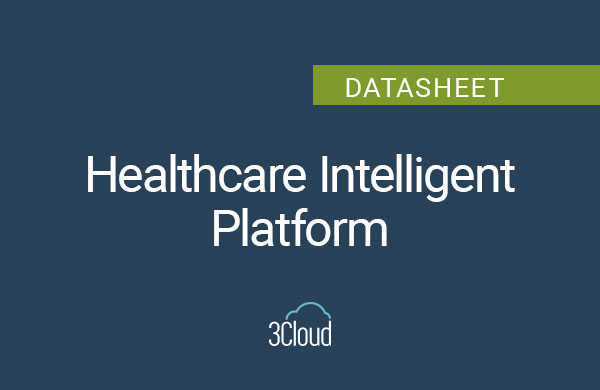Serverless computing presents a new model in application development and deployment, different from traditional server management practices. Serverless computing provides direct code execution without the need for managing the underlying infrastructure, which provides a more streamlined process. It is flexible, scalable, and cost-effective, which makes it a great choice for various business needs.
This article will explore, dissect, compare, and examine serverless computing, as well as answer common questions and misconceptions, benefits and challenges of implementing serverless computing, and provide insight into the practical applications and future potential.
Understanding Serverless Computing
Serverless computing is a way to run applications and services without having to manage servers. The cloud provider takes on the responsibility of managing the servers, security, maintenance, and scaling, which allows developers to concentrate on building and running applications and services.
Before serverless computing companies had to take care of their own servers, which was expensive and complex. Next came cloud computing, where a company could rent space on someone else’s servers. With serverless, companies don’t have to think about the servers, and it makes creating and running apps faster, easier, and less expensive.
Serverless computing gives businesses the ability to scale according to application usage, eliminating manual scaling processes. In other words, businesses only pay for the resources used during application runtime. Such efficiency makes serverless computing a favorable option for businesses aiming to optimize operational expenditures.
Serverless vs. Cloud Computing
While serverless computing is a subset of cloud computing, there are distinct differences between the two. Traditional cloud computing often involves renting or using virtual machines or dedicated hardware, where the user is still responsible for managing and scaling the servers. Serverless computing removes this level of management for companies, focusing solely on the application code. The cloud service provider manages the machine resources, offering a more hands-off approach for developers and businesses.
Serverless computing fits within the broader spectrum of cloud services by offering a unique combination of scalability and efficiency. It complements other cloud services like IaaS (Infrastructure as a Service) and PaaS (Platform as a Service), providing a solution that automates many of the infrastructure management tasks associated with traditional cloud services.
To understand the differences between serverless and traditional cloud computing, there are case studies that show how businesses using serverless computing report significant reductions in operational costs because of the pay for what you use pricing model. Serverless platforms can handle sudden traffic spikes without manual intervention.
Serverless Computing: SaaS or PaaS?
Determining whether serverless computing aligns more with Software as a Service (SaaS) or Platform as a Service (PaaS) involves understanding each model and how serverless technology fits into the broader cloud services landscape.
Software as a Service, or SaaS, refers to subscription-based software access over the internet, eliminating the need for local installation. Platform as a Service, or PaaS, on the other hand, offers a framework for developers to build upon and create customized applications without managing the underlying infrastructure.
Serverless computing straddles the line between SaaS and PaaS. Like PaaS, it gives developers a platform to develop and deploy applications without the overhead of server maintenance. Yet it also shares characteristics with SaaS, giving users on-demand functionality without the need for underlying infrastructure knowledge or control.
By blending the convenience of SaaS with the development flexibility of PaaS, serverless computing presents an adaptive solution for businesses. It supports a range of applications from simple to complex, empowering companies to focus on innovation and customer experience rather than infrastructure management.
Serverless Platforms
Selecting the right serverless platform is important for businesses looking to optimize their application development and operational efficiency. Major cloud providers, such as Azure Functions and Google Cloud Functions, offer a range of serverless options, each with unique features and benefits.
Azure Functions provides robust solutions for automating business processes and integrating various services.
- Azure Functions is a key player in this space, enabling developers to run code in response to events without the complexity of server management.
- Azure offers many choices of programming languages like JavaScript. C#, F#, Python among other and a great developer experience.
- Azure supports continuous deployment of codes, helps in the debugging process, and removes obstacles.
- Azure helps with functions as Serverless APIs with Node.js or Microsoft .NET.
- Has built-in artificial intelligence to provide automated service.
- Azure has the best machine learning systems and the most accurate automation.
The criteria for selecting a serverless provider should include scalability, cost, supported languages, and ease of integration with existing systems. A well-chosen platform can significantly streamline deployment processes, reduce costs, and enhance application performance.
For businesses seeking guidance in navigating the multitude of serverless options, 3Cloud offers expert advice. Our specialists can assist in ensuring a smooth transition to this modern technology.
Reducing Costs with Serverless Computing
Cost management is a core concern for any business, and serverless computing offers an attractive financial model, especially compared to traditional server-based infrastructure. By adopting a serverless approach, companies can experience a significant decrease in operational costs.
The pay-as-you-go pricing structure is fundamental to the cost-effectiveness of serverless computing. Businesses only incur costs when their applications are actively running, not for idle server time. This model aligns operating expenses directly with actual usage, which can lead to substantial savings, particularly for applications with variable traffic.
Serverless computing simplifies operational processes by separating the infrastructure layer. This reduces the need for a dedicated team to manage server hardware and software, leading to further cost reductions. The reduced complexity not only lowers direct infrastructure costs but also allows teams to allocate more time and resources to innovation and development.
Addressing Challenges in Serverless Computing
While serverless computing provides many benefits, it also presents certain challenges that businesses need to navigate. Understanding these challenges and implementing strategies to mitigate them is critical for a successful serverless architecture.
Some of the common challenges include:
- Cold start times, which can affect performance,
- Limitations in long-running processes due to time-outs
- Complexities in debugging and monitoring serverless applications
- Considerations around security and compliance Strategies for Mitigation
To address these challenges, it is important to adopt best practices:
- Implementing code that is optimized for quick execution
- Using third-party services for monitoring and debuggin
- Designing applications with security in mind from the outset
- Employing an architecture that is well-suited for serverless, such as microservices
For businesses looking for support in overcoming these obstacles, reaching out to serverless computing experts can provide tailored solutions and strategic advice. Contact 3Cloud for guidance on best practices and to ensure your serverless architecture is optimized for both performance and cost.
The Future of Serverless Computing
Serverless computing has redefined the way businesses approach application development and deployment, offering a model that emphasizes scalability, flexibility, and cost management. It allows developers to create and run applications without the overhead of continuous server management and provides a pricing structure that aligns with actual usage, which can lead to significant cost savings.
Looking ahead, serverless computing is poised to play a pivotal role in business innovation and growth. Its ability to facilitate rapid development cycles and reduce time to market for new features and services makes it an invaluable asset for businesses looking to stay competitive and responsive to consumer needs.
The progression of serverless computing has already made an impact on the technology landscape, and its influence will continue to grow. As businesses strive for greater efficiency and agility, serverless computing stands out as a solution that can evolve with the changing demands of the digital marketplace.
As serverless technology continues to mature, engaging with the community through feedback and discussion will help shape its future. Businesses, developers, and IT professionals are encouraged to contribute to the conversation by exploring its possibilities, exchanging knowledge, and testing its limits.
For those interested in exploring how serverless computing can benefit their business or to start a conversation about the future of this technology, reach out to us today.




